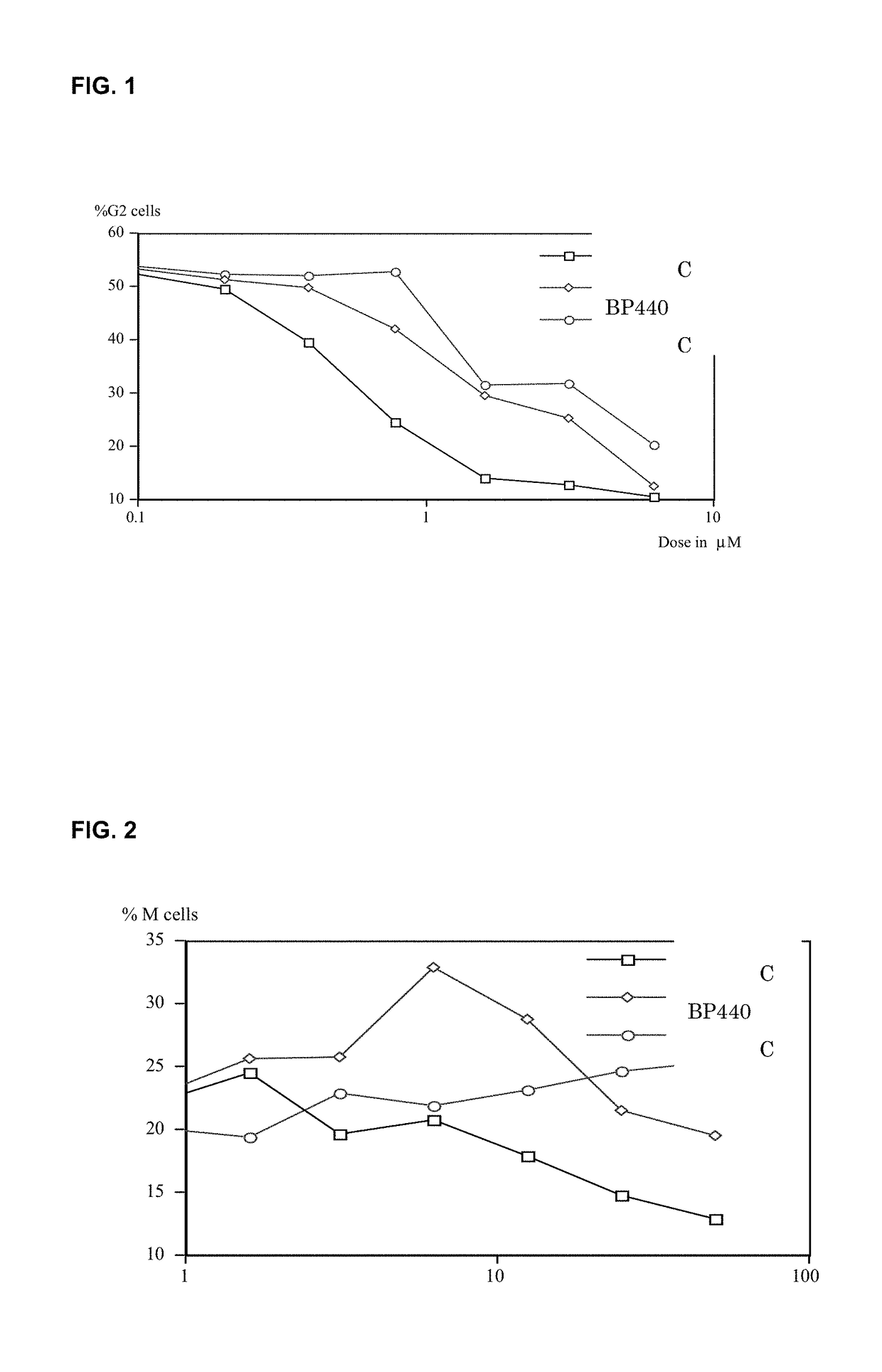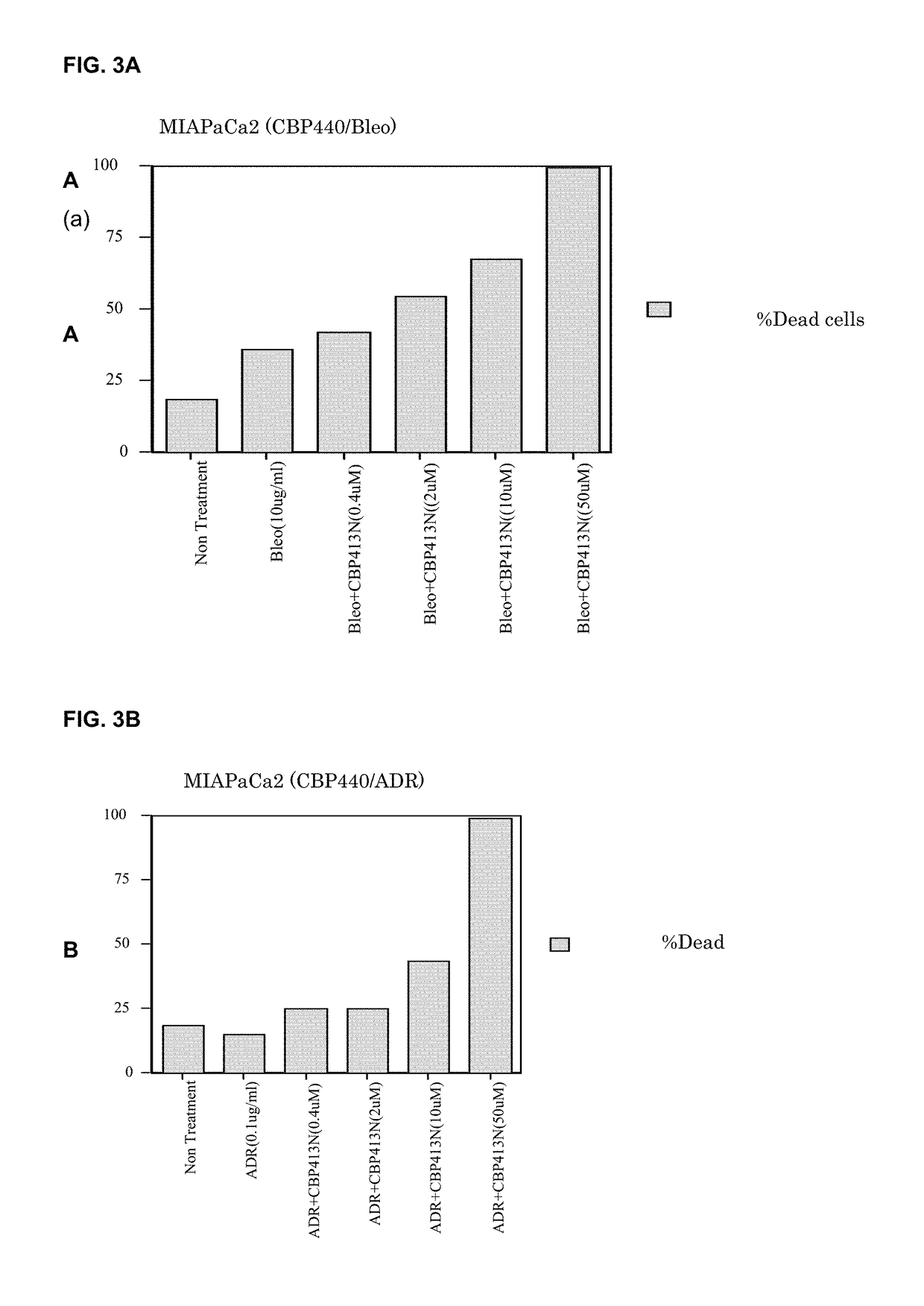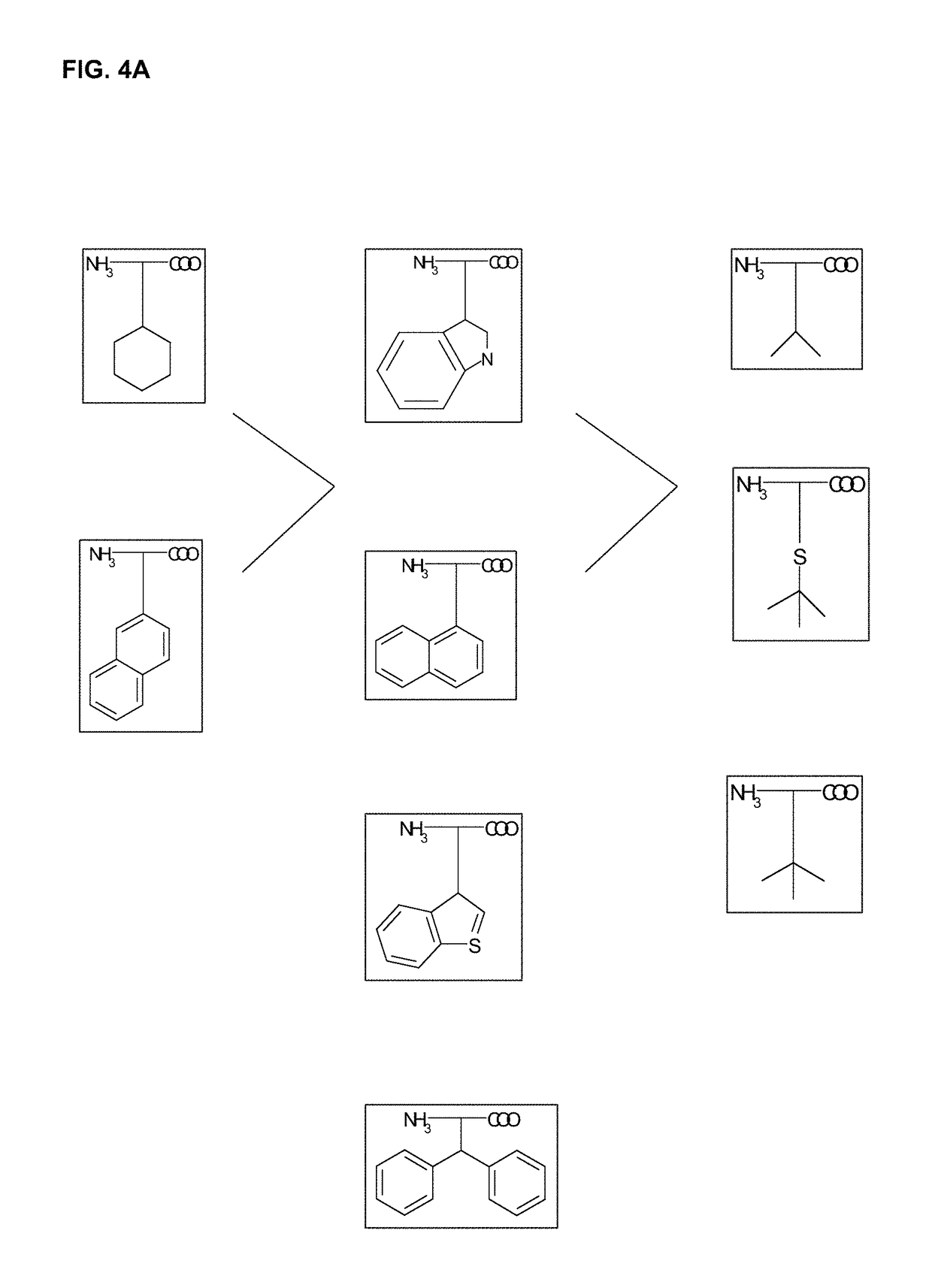Peptides and peptidomimetics in combination with t cell activating and/or checkpoint inhibiting agents for cancer treatment
a technology of t cell activation and inhibitory agents, which is applied in the direction of antibody medical ingredients, peptide/protein ingredients, drug compositions, etc., can solve the problems of adversely affecting patient survival, insufficient understanding of g2 checkpoint mechanism, and inability to fully understand the mechanism of g2 checkpoint, etc., to inhibit or reduce relapse, growth, progression, and worsening or metastasizing the tumor. , to inhibit or prevent progression, to inhibit or preven
- Summary
- Abstract
- Description
- Claims
- Application Information
AI Technical Summary
Benefits of technology
Problems solved by technology
Method used
Image
Examples
example 1
[0237]This example describes materials and several methods. This example also describes the sequences of analyzed peptides / peptidomimetics.
[0238]Chemicals and reagents Bleomycin was purchased from Wako Pure Chemical Co. (Osaka, Japan) and it was dissolved in distilled H2O to 10 mg / ml. Propidium iodide (PI) and adriamycin were purchased from Sigma (St. Louis, Mo.).
[0239]Cell culture A human T-cell leukemia-derived cell line, Jurkat, was cultured in RPMI 1640 (Sigma) supplemented with 10% fetal calf serum (IBL: Immuno-Biological Laboratories, Gunma, Japan) at 37° C. / 5% CO2. Human pancreatic cancer derived cell line, MIAPaCa2 was cultured in DMEM with 10% fetal calf serum at 37° C. / 5% CO2.
[0240]Cell-cycle analysis The cell cycle status of the cells treated with bleomycin or adriamcin were analyzed by flow cytometry as described by Kawabe (1997) Nature 385:454-458. In brief, two million cells were re-suspended and incubated in 200 μl Krishan's solution (0.1% Sodium citrate, 50 μg / ml PI,...
example 2
[0242]This example describes data indicating the G2 abrogating activity of various peptides, and the effect of various sequence permutations on activity including the effect of decreasing sequence length.
[0243]Flow cytometry analysis of G2 checkpoint abrogation was performed using human leukemia derived Jurkat cell line. In brief, cultured cells were treated with various doses of peptide / peptidomimetic and 40 μg / ml bleomycine for 24 hr. The DNA of the cells was stained with propidium iodide and analyzed by flow cytometry. These results are summarized in Table 2.
[0244]A dose response curve of each peptide / peptidomimetic when used against bleomycin treated Jurkat cells are shown in FIGS. 1, 5, 6, 7, 8, 11 and 12; the Y-axis indicates the % G2 / M Jurkat cells 24 hrs after the treatment.
[0245]Flow cytometry analysis of M phase checkpoint abrogation by the compounds was performed using human T cell leukemia Jurkat cell line treated with colchicine (5 μg / ml or 0.5 μg / ml) and various doses ...
example 3
[0263]This example describes peptide / peptidomimetic kinase inhibition activity and serum stability analysis of various peptides.
[0264]Since two kinases, Chk1 and Chk2, are important for G2 checkpoint mechanism, kinase inhibition analysis of both enzymes was performed. In vitro kinase inhibition analysis was performed using “PepTag® Non-Radioactive Protein Kinase Assays”, Promega, according to company's protocol, except purified CHK2 kinase was used instead of PKC. Purified PKC was purchased from Upstate Biotechnology, Inc. These results are shown in Table 4A.
[0265]
TABLE 4AKinase inhibition analysis of the compoundsIC50 in μMPKACHK2CBP450>40010CBP4401808
[0266]In vitro kinase inhibition analysis was performed by CycLex, Co. Ltd., Nagano, Japan. Briefly, baculovirus derived recombinant human full length Chk1 with histidine tag or E. Coli derived recombinant human full length Chk2 fused with GST were used as kinases. E. Coli derived recombinant GST-Cdc25C (amino acis 167-267) was used a...
PUM
| Property | Measurement | Unit |
|---|---|---|
| checkpoint time | aaaaa | aaaaa |
| size | aaaaa | aaaaa |
| half life | aaaaa | aaaaa |
Abstract
Description
Claims
Application Information
 Login to View More
Login to View More - R&D
- Intellectual Property
- Life Sciences
- Materials
- Tech Scout
- Unparalleled Data Quality
- Higher Quality Content
- 60% Fewer Hallucinations
Browse by: Latest US Patents, China's latest patents, Technical Efficacy Thesaurus, Application Domain, Technology Topic, Popular Technical Reports.
© 2025 PatSnap. All rights reserved.Legal|Privacy policy|Modern Slavery Act Transparency Statement|Sitemap|About US| Contact US: help@patsnap.com



